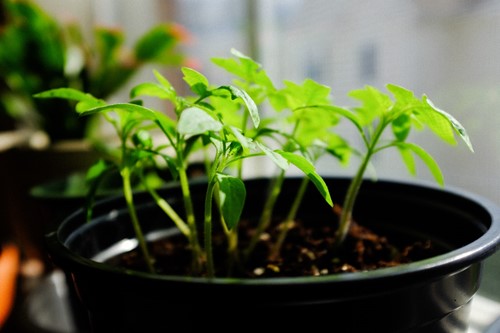Email: [email protected]

Dealing with pests in your garden is frustrating. What’s worse is that with the plethora of pest control options available on the market it can seem impossible to make the right choice. This is especially tricky if you want to avoid using harsh chemicals present in most of the leading insecticide brands. Luckily, there are DIY options that actually work. Here is one simple way to make your own pesticide spray without harsh chemicals.
While there might be a lot of pests to contend with in the garden, most of them share the same weaknesses. Conveniently, one of these weaknesses is mild liquid soap. By mixing a weak solution of soap and water you can create your own insecticidal spray for your plants with no harsh chemicals or nasty fumes. The key is to use a soap with fatty acids like Castile soap. The fatty acids in the soap will break down insect exoskeletons and effectively rid your plants of aphids, mites, whiteflies and thrips. This means you should not use dish or hand soap, as they usually contain de-greasing ingredients that won’t affect the pests (but are safe for cleaning plants).
To make a stronger homemade spray, add a bit of neem oil. This vegetable oil derived from a type of evergreen is a favorite among plant owners who prefer an organic approach to pest control. Not only will adding neem oil extend the list of pests you can handle, it can also kill fungus, mold and insect larvae in the soil. You’ll find neem oil included in ready-made pesticides and fungicides combined with other ingredients. Some more pests neem oil can kill and deter include mealy bugs, beet worm, cabbage worms, fungus gnats, beetles, moth larvae, mushroom flies and Japanese beetle.
Before cleaning your plants with your DIY solution, try a test leaf or two to make sure the particular plant won’t have an adverse reaction. If you’re using neem oil, use protective gear to avoid skin irritation and keep it away from children or pets. Many gardeners refrain from using neem oil to treat outdoor gardens as it poses potential danger to beneficial insects like butterflies, ladybugs and bees. It’s also toxic to humans and other mammals if ingested. When used carefully it’s extremely effective in protecting plants from a long list of harmful pests.
There are other organic methods for controlling pests in your garden but making your own bug spray is a convenient and effective option. You can use this same recipe on houseplants, vegetables and other outdoor plants without worrying about harsh chemicals.

Originally from the midwest, Natalie and her husband Brian spent many years following his career but knew they were forever home when they made it to the Lowcountry. During vacations on Kiawah Island, they would dream of retiring to the South Carolina coast. When an opportunity presented itself to move to Bluffton much earlier than they envisioned, it was a “no brainer” and has proven to be one of their family’s best decisions. The two things Natalie loves most about the area are the community’s welcoming attitude and the always changing, but consistently breathtaking, views from the Lowcountry bridges. “It seems that everyone you meet in Bluffton and Hilton Head loves their community and genuinely wants you to fall in love with it, too…whether it’s for a week of vacation or to plant your own long-time roots.”